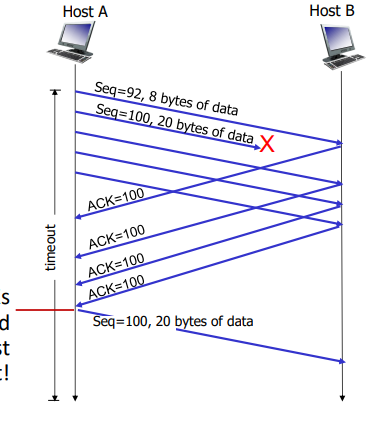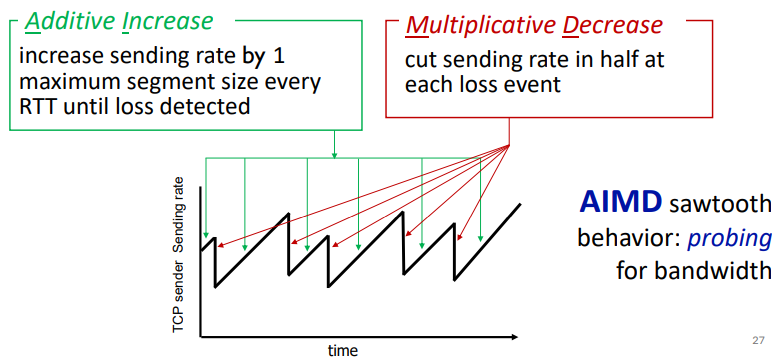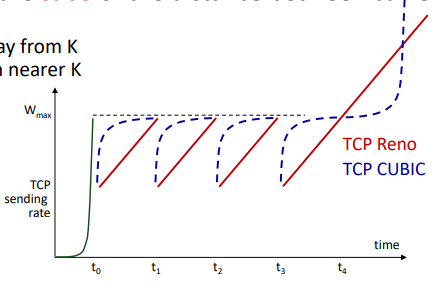W5 L2 - Principles of congestion control
1/5
There's no tags or description
Looks like no tags are added yet.
Name | Mastery | Learn | Test | Matching | Spaced |
|---|
No study sessions yet.
6 Terms
Sequence number
Number assigned to each byte of data sent over a connection
Tracks the order of data, enabling correct reassembly at the receiver’s end
Cumulative ACK
TCP can only send an ACK if it has positively received all bytes preceeding that ACK
So if host1 never receives an ACK for 100, but does receive one for 120, it can assume the ACK for seq 100 was lost in traffic
TCP fast retransmit
If sender receives 3 additional ACKs for same data, resend unACKed segment with smallest seq #

TCP flow control
“receive window” in TCP data controls the sender, so that the sender doesn’t overflow the receiver’s buffer by transmitting too quickly
TCP Congestion Control - AIMD
Senders increase sending rate until packet loss occurs, then decrease sending rate, gradually working back up
Decrease specifics:
Cut in half when triple duplicate detected
Cut to 1 MSS (Maximum segment size) when timeout detected
MSS is the maximum chunk of data without fragmenting

TCP Congestion Control - TCP Cubic
Improvement upon AIMD
Increases cubicly rather than linearly, allowing more time in a high sending rate before being reset
